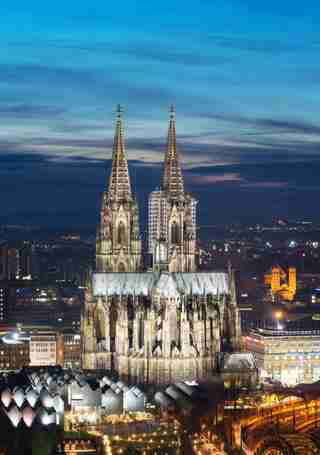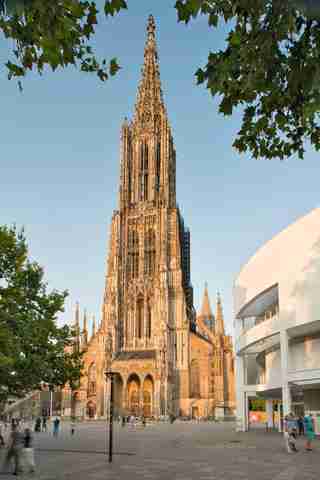November 22,2022
AD Ranks the World’s Tallest Buildings by Decade
by David Stewart

For centuries, buildings were constructed from the strongest material available: stone. Though durable and practical, it limited a contractor's potential to build higher than 600 feet. But in 1848, the Scottish man who would change city skylines across the world—Andrew Carnegie—immigrated to America. It took nearly four decades for him to found the Carnegie Steel Co. (later the U.S. Steel Corp.), which led a vast expansion of steel production throughout the country and globe. Suddenly, the sky became the limit for building, and cities began to grow vertically. Looking back nearly 150 years, AD surveys the world’s tallest buildings by the decade.
Pictured here: Rouen Cathedral (1870s) Built in 1876, this stone cathedral in France reached a final height of 495 feet, led by the efforts of architect Jean d’Andely.

Cologne Cathedral (1880s) Completed in 1880 and reaching heights of 516 feet, this German cathedral was built of stone and designed by Ernst Friedrich Zwirner.

Ulm Minster (1890s) Made in 1890, this 530-foot stone church in Germany was designed by architects Ulrich Ensingen, Matthäus Böblinger, Burkhart Engelberg, and Konrad Heinzelmann.
Metropolitan Life Insurance Company Tower (1900–1909) Built in 1909 and rising 700 feet above New York City, this building by Napoleon LeBrun & Sons was one of the first to use steel in its construction.
Woolworth Building (1910–1929) Completed in 1913, Cass Gilbert’s 792-foot Woolworth Building was also built using steel. For nearly two decades, the Manhattan icon held the title of the world’s tallest tower.
Empire State Building (1930–1969) Constructed in 1931, the 1,250-foot-tall New York skyscraper surpassed the Woolworth Building and remained the world’s tallest building for several decades. William Lamb—of Shreve, Lamb & Harmon Associates—designed the structure using steel.
Willis Tower (formerly Sears Tower) (1970–1989) Built in 1973 and reaching a final height of 1,451 feet, Bruce Graham—of Skidmore, Owings and Merrill—designed the Willis Tower in Chicago using steel.
Petronas Towers (1990s) Created in 1998 and located in Kuala Lumpur, Malaysia, these twin skyscrapers soar to 1,483 feet. Designed by César Pelli, the towers are made of concrete and steel.
Taipei 101 (2000–2009) Finished in 2004, this 1,667-foot tower in Taiwan was designed by architect C.Y. Lee and made of steel.
Burj Khalifa (2010–present) Completed in 2010 and reaching a height of 2,717 feet, this skyscraper towers over the city of Dubai in the United Arab Emirates. It was designed by Skidmore, Owings and Merrill and constructed of steel and concrete.






